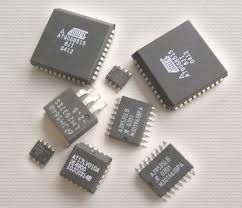Qualcomm debuts 2.5 GHz Snapdragon mobile chip

Chip-maker Qualcomm Inc. (NASDAQ:QCOM) is debuting a new version of its Snapdragon mobile processor offering speeds of up to 2.5 gigahertz and twelve times faster than its predecessors.
At the Mobile World Congress, the company unveiled the quad-core Snapdragon chipset - based on the new micro-architecture code named “Krait” - designed to meet the requirements of next generation tablets and computing devices.
Qualcomm said the APQ8064 chip will integrate a quad-combo of connectivity solutions - WiFi, GPS, Bluetooth and FM - and include support for near field communication, as well as stereoscopic 3D video and photo capture and playback.
The company expects samples of the APQ8064 chip to be available in early 2012.
Qualcomm integrated four new, low-power CPU cores and its advanced Adreno graphics into the APQ8064, enabling it to offer twelve times the available performance as well as 75 percent lower power than the first generation of Snapdragon processors.
The combination of advanced processors and multimedia technology will provide tablets and mobile computing devices with unsurpassed performance, battery life, low thermal dissipation and the broadest set of connectivity options available in the industry, it said.
According to Qualcomm, the APQ8064 processor will include the Adreno 320 quad-core GPU, which will deliver fifteen times greater performance than the original Adreno GPU, for a console-quality gaming experience. With up to 20 Megapixel camera support, the APQ8064 will internally synchronize two camera sensors for 3D video recording and will support external 3D video playback.
With its WiFi integration and ability to seamlessly interface with Qualcomm’s 3G and LTE modules, the APQ8064 will provide OEM’s with a flexible, cost efficient and fast time to market platform that can meet all of their design configuration needs for tablets and next generation computing and consumer electronic devices, said Luis Pineda, senior vice president of computing and consumer products at Qualcomm.
© Copyright IBTimes 2024. All rights reserved.





















